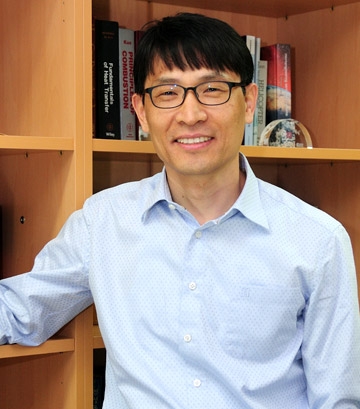Home
Introduction
Faculty
Faculty
Professor
Kim, Chong Am
Education / Career
- - 1988 Seoul National University, Aerospace Eng, BS degree
- - 1990 Seoul National University, Aerospace Eng, MS degree
- - 1997 U.S.A Princeton University, School of Mechanical & Aerospace Eng, Ph.D.
- - 1998-Present Professor, Seoul National University, Department of Mechanical & Aerospace Engineering
Research Interests
Researches in professor Kim’s Lab. largely focuses on the development of advanced numerical methods for solving partial differential equation (PDE) and their applications to several aerodynamic engineering fields. Regarding advanced numerical methods for reliable numerical simulations, accurate, robust and efficient FVM-based flux schemes and limiting schemes (e.g. RoeM/RoeM_N, AUSMPW+/M-AUSMPW+/AUSMPW+_N fluxes, and MLP/MLP-u limiters) are developed. For higher-order methods such as DG, FR/CPR, higher-order shock-capturing method (hMLP, and hMLP_BD) are developed. Using these numerical methods, a number of applications are being conducted. First, we are conducting researches on all-speed multi-phase flows with phase change. This research area includes cavitation, multi-phase shock analysis and physics of cryogens inside liquid rocket. Fully integrated (fluid-structure-burning) computational simulations for multidisciplinary phenomena inside solid rocket motor are being conducted. Particular interests are focusing on nonlinear feedback interaction of fluid, solid, and burning module in order to examine highly coupled unsteady phenomena between hot gas flow, structure deformation and propellant burning. Fluid-Structure Interaction simulations of biomimetic flapping MAV’s are also being conducted. To achieve optimal performance of flapping MAV’s, analyses are focused on the unsteady aerodynamic force generation mechanism and the flexibility of the wing depending on insect’s flapping motion and structural materials. Aerodynamic shape design optimization is performed with high-fidelity computational analysis and optimization methodologies. Shape design optimization of airfoil, wing, wing-body configurations and intake is conducted. And, we are conducting researches on active flow control using synthetic jet to provide additional momentum to external flow for separation delay.

